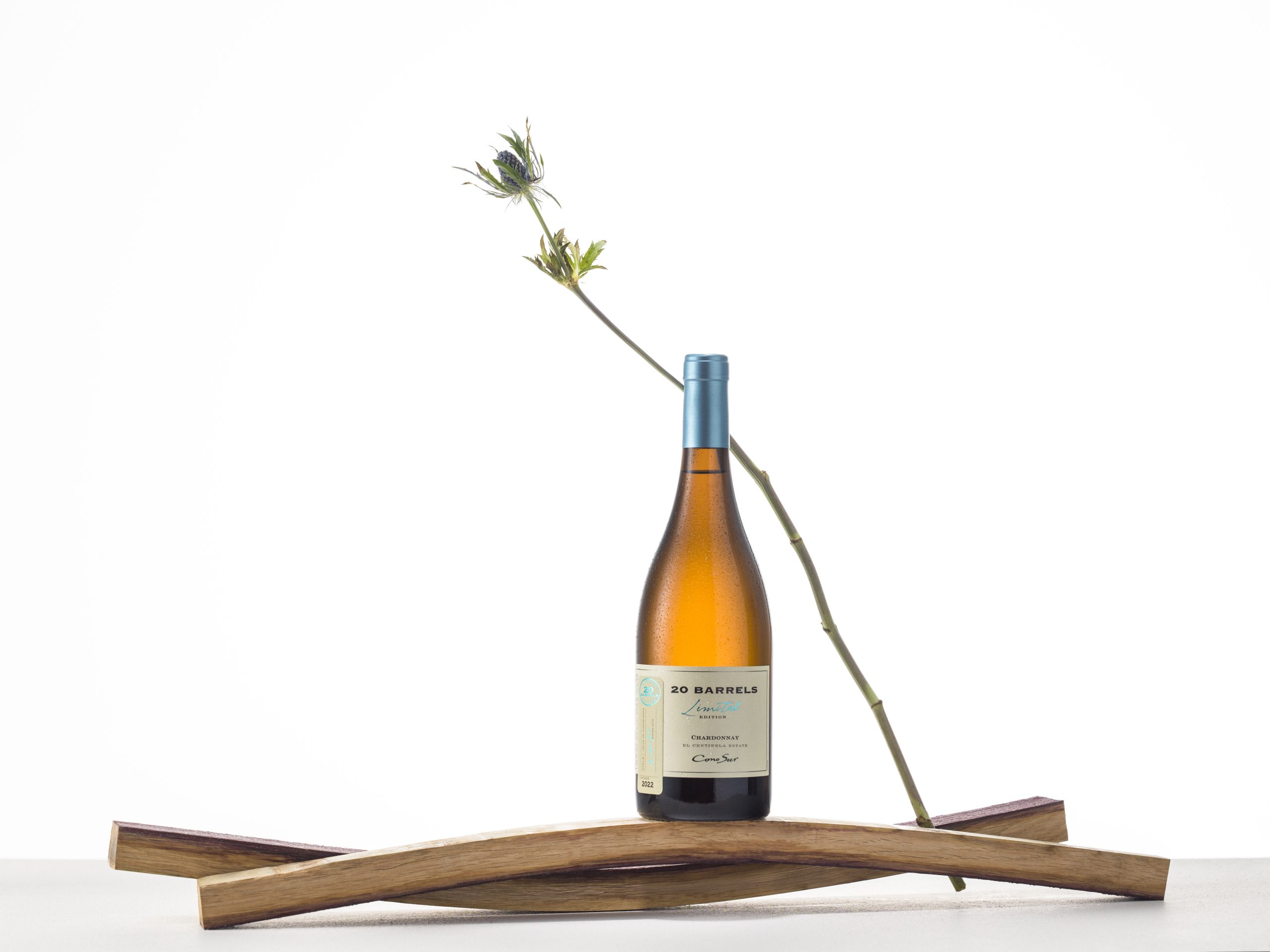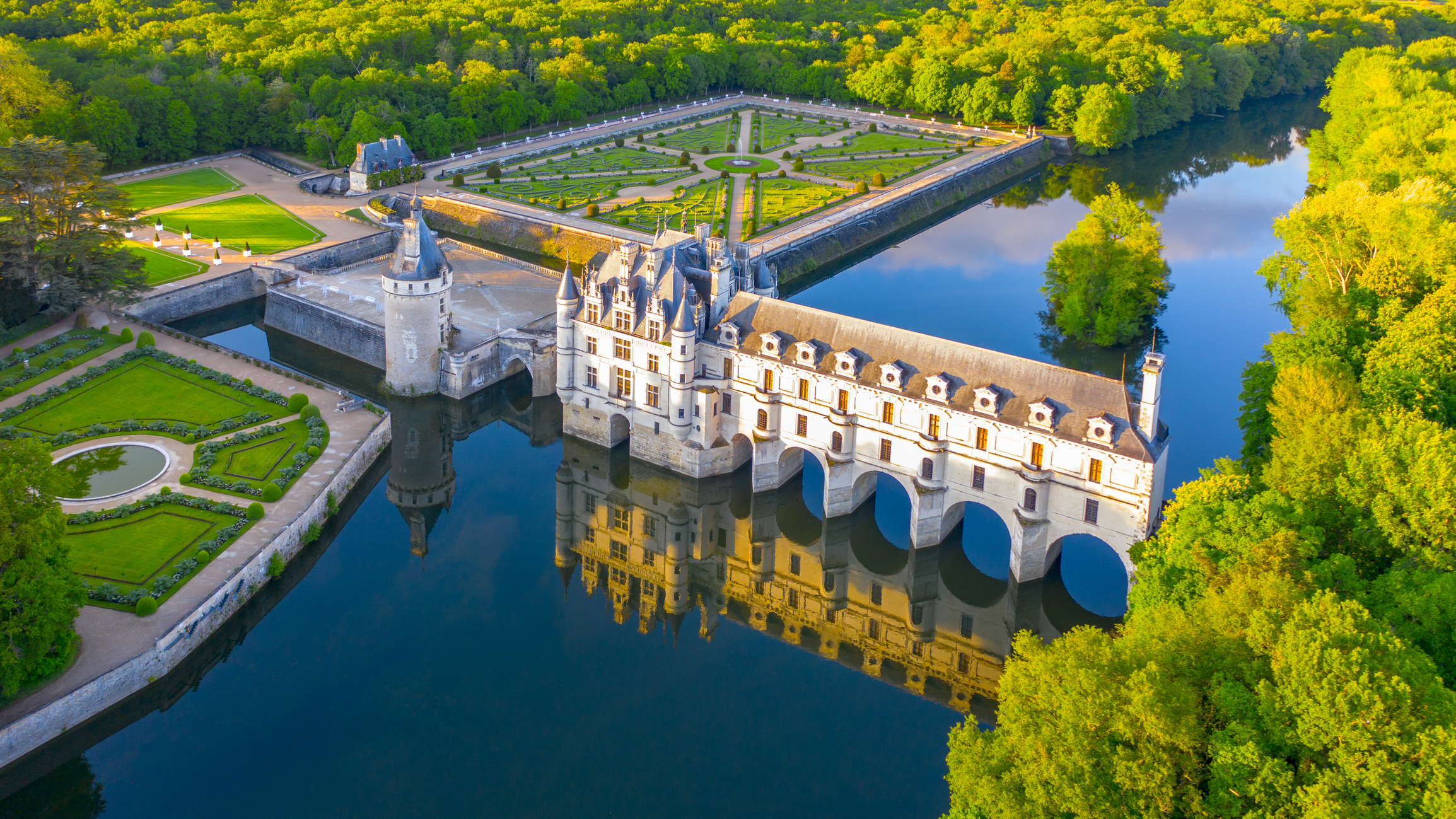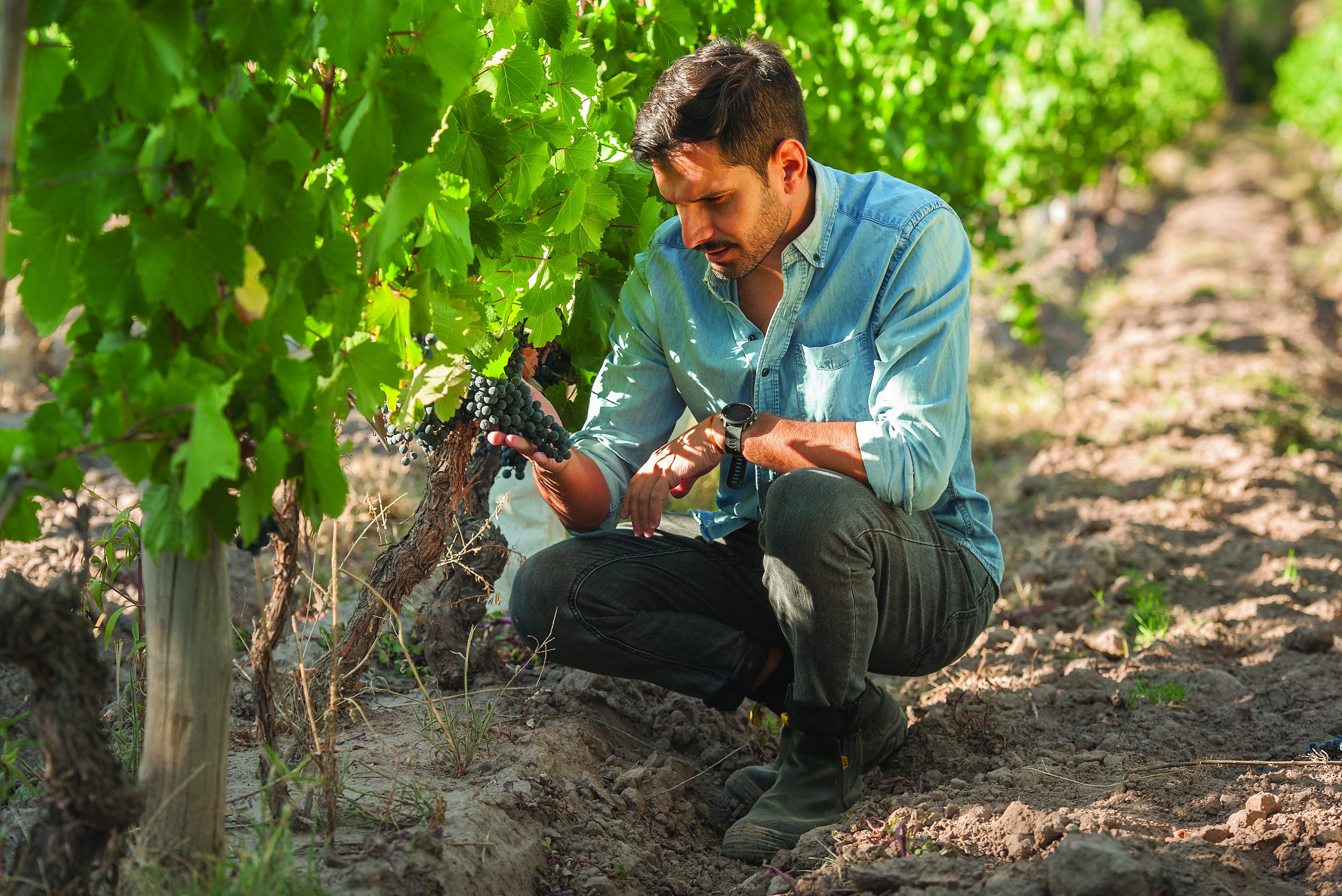This website uses cookies so that we can provide you with the best user experience possible. Cookie information is stored in your browser and performs functions such as recognising you when you return to our website and helping our team to understand which sections of the website you find most interesting and useful.
Super Tuscan
By db staff writerHaving revolutionised Chianti, Piero Antinori is tapping into the vast potential of Puglia, a region that could beat the New World at its own varietal game, says Tom Bruce-Gardyne
ACCORDING TO Carlo Pasqua who heads one of the biggest privately-owned wine firms in Italy, less than a fifth of family-run businesses there survive beyond the third generation. Like the old English proverb "clogs to clogs in three genenerations", the founder’s grandchildren take over and then start fighting over who gets the best job and the flashiest car while the company goes to rack and ruin.
For Pasqua, set up by Carlo’s father in 1925, the moment of truth is not far off. But down in Tuscany, Piero Antinori has less cause for concern. For a family firm now in its 26th generation, the "clogs to clogs" moment happened some time in the 15th century.
Yet the story of Antinori is more than just a tale of dynastic survival – it is one of real commercial success. Under Piero Antinori, the business has grown dramatically, producing wine from Piedmont to Puglia and from Hungary to the Napa Valley overseas.
With turnover of around €110 million it is now Italy’s second biggest wine company. While that is some way short of Gruppo Italiano Vino whose turnover is two and a half times the size, it is still impressive for what was a medium-sized Chianti producer until Piero took over in 1966.
Now 66, Piero Antinori says he feels ready to ease himself into retirement as his three daughters – Albiera (38), Allegra (33) and Alessia (29) gradually assume more responsibility. He believes the family element works well with the creative, entrepreneurial side of Italy, but admits it can be a doubleedged sword.
"Family businesses have advantages, but obviously some weaknesses. Sometimes the owner is a bit of a boss and he wants to do everything himself and then has to hand over." There is also the thorny issue of share ownership between family members.
When Piero’s younger brother, Lodovico decided to leave the company and set up on his own with an estate at Bolgheri where he later produced Ornellaia, he needed to liquidate his share. This led to Antinori forming a 50/50 partnership with Whitbread in 1981.
To many Italians it looked like the beginning of the end – a venerable family dynasty climbing into bed with a ruthless corporate giant. Surely Whitbread would gobble them up? Luckily for the British PLC its then chairman was Sam Whitbread, a direct descendant of the company’s 18th century founder, who was dispatched on a charm offensive to dispel any fears.
The real worry came later when Whitbread pulled out in the early nineties and sold its wine and spirits interests to Allied Domecq. Allied was apparently very keen to get Antinori, but somehow Piero managed to wrestle the firm back into 100% family control.
"I’m not concerned with the problems of transition. I am very lucky to have Renzo Cotarella as my right arm," says Antinori. Cotarella has been with him for almost 30 years and is now general manager as well as chief winemaker.
"He is, in a way, part of the family," says Antinori. "So this helps a lot with the transition because my daughters report more to him than they do to me." He accepts that having an oenologist in charge of day-today business is unusual, but it reflects the complexities of a company that has changed beyond recognition in the last 20 years.
In 1985 Antinori owned about 300 hectares of vineyards, all in Tuscany and Umbria, and operated like a French négociant-éleveur buying in over 80% of its needs mainly in bulk wine. Today, that figure has leapt to 1,800ha in Italy and a further 420ha in Hungary, the US, Malta and now Chile.
While the company still buys in almost half its needs from outside, almost all in grapes, its own vineyards account for 75% of profits. By contrast, total volume has increased far less dramatically in the last 20 years – up by a fifth to 1.5m cases.
However, according to marketing director, Massimo Marcja, the average bottle price has risen three to four times in real terms. Production became a prime focus because Chianti’s reputation was in freefall.
The wholesale replanting of Tuscan vineyards following the end of the mezzadria system of share-cropping in the sixties was the worst hing to hit the vines since phylloxera. By using unsuitable, high-yielding clones of Sangiovese, planted too far apart and trained in the wrong way, the flagship wine of Tuscany became almost a joke, a cheap and cheerful house wine for the world’s trattoria.
Antinori has probably fought harder than anyone to repair the damage, though at first the authorities saw him more as a dangerous subversive. They had only just instigated the Chianti Classico DOCG when Antinori released Tignanello in the early seventies.
Produced in the heart of Chianti Classico with a hefty dollop of Cabernet Sauvignon the wine was classified as a humble vino da tavola and yet sold for a price that was anything but humble. For a while, the wave of Supertuscans that followed threatened to sink the whole DOCG system in Tuscany.
Today the pendulum has swung back and some of Antinori’s best reds are pure angiovese.
But does he feel the battle in the vineyards has been won? "The vineyards of the sixties are reaching the end of their life and need replanting. This time everybody has a much better knowledge of clonal selection and planting density," he says.
Nevertheless, you can still see examples of bad sixties viticulture, even in Chianti Classico, with the obligatory ugly, concrete posts. Antinori feels generic Chianti and Chianti Classico are destined to lead increasingly separate lives.
He reckons some of the satellite appellations will pursue a quality agenda linked with Chianti, like Chianti Rufina, while much of the rest will "go another way". There are obvious parallels with Bordeaux, with Chianti Classico playing the role of St. Emilion, and basic Chianti DOCG sharing the unenviable plight as generic AC Bordeaux.
Partner Content
It is an analogy he accepts up to a point. "Chianti is a large appellation, though nothing compared to Bordeaux with its 6m hectolitres. Chianti may be less than 1m hectolitres. But in Italian terms it’s a big appellation, and generic Chianti suffers a bit from its size.
When it’s big it’s difficult to really control the price. I think the problem for Chianti is that the quality and the price are not at all uniform, and that confuses a bit. But I think Chianti Classico is much more uniform."
Yet, while the Chianti Classico DOCG may be obvious on the ground in terms of its soil and topography making it a homogeneous region with a clear sense of terroir, it isn’t so obvious on the shelf. Does this worry him? "Yes it does. It’s very difficult to have the consumer understand that just a little additional word ‘classico’ can make such a difference. If you taste the wine you probably understand why, but if you see it on a wine list it’s a bit confusing.
But there’s nothing we can do about it, unfortunately." The company has long understood the power of brands. "The advantage of Antinori over many other wine producers was that my father was much more focused on marketing than production.
All the others, friends of my father with estates, would know how to produce a wine, but they wouldn’t know how to sell it. Most of them considered their role was finished with the production of the wine.
Nobody at that time would have thought of putting their name or their coat of arms on the label. That was considered vulgar. Fortunately, my father didn’t have any complexes like that."
The flagship brand is Villa Antinori which was, until recently, a Chianti Classico Riserva. "In 2001 we took a strategic decision to make the wine an IGT Toscana, but source all the grapes entirely from our own estates," explains Massimo Marcja.
"It was to be a family blend where we had full control. The key issue was to improve quality and allow us to experiment with new techniques." The new wine was released in January 2004.
It looked the same, with the Antinori brand name as visible as ever on the label. In Sweden, the buyers for the state monopoly chose to let consumers decide whether they minded that the wine’s appellation had changed. Apparently, Swedish sales have grown 20%.
Meanwhile, one of the big supermarkets in Britain promptly took it off its shelves "because it was no longer Chianti". ntinori’s expansion into other parts of Tuscany was facilitated by owning estates on the coast at Bolgheri and in the Maremma.
To expand any further would mean buying land where costs have soared thanks to the influx of wealthy foreigners. "The wine business is a real estate business," says Marcja. "You acquire the land and plant the vines.
For 1ha in Tuscany you can buy 5ha in other regions that may have better potential." And so, like many others before, Antinori began to look south. In the late nineties the company bought a couple of estates in Puglia near Salento and created the Tormeasca range.
Antinori now has 370ha of vineyards there. For a Tuscan producer it was a neat reversal of the old tradition in which gallons of Puglian red were tankered north at vintage time to beef up insipid Chianti, and Antinori is aware of the irony.
"Yes we knew a bit about Puglia’s potential, especially from the little alberello bush vines." Marcja is convinced the south can play the New World at its own game in terms of offering good value, varietal wines.
"Don’t forget that Puglia and Sicily produce a third of all Italian wine – that’s more than Australia. The only thing missing is there’s no Penfolds or Hardys." He reckons this could change over time because a brand from Puglia would have nothing like the supply constraints of one from Tuscany.
The company’s main Tuscan red is Santa Cristina, with production around 5m bottles a year. "Maybe that could reach 6m or 7m, but no more. The equivalent from Puglia could reach 20m bottles, no trouble."
He adds that there is nothing to stop Tormeasca being bigger than the rest of Antinori one day. We shall see. For now there are issues to sort out overseas. In 1985, together with Whitbread, Antinori bought the Napa Valley estate of Atlas Peak.
With its relatively high altitude and rocky soil it was similar to Tuscany, but attempts to create a Californian Sangiovese have not been a great success. Most of the 200ha are now planted with the usual suspects – Cabernet Sauvignon et al.
Atlas Peak is currently handled by Allied Domecq through a lease-back deal signed after Whitbread pulled out. In 2008 the contract expires and Antinori will assume full control of its biggest foreign investment.
In the meantime, Antinori has taken his first tentative steps into the southern hemisphere with a joint-venture in Chile. "Because," he explains, a little ruefully, "they’re busy when we’re not so busy."
He is nothing if not pragmatic and that’s certainly one reason why the company has survived for so long.





